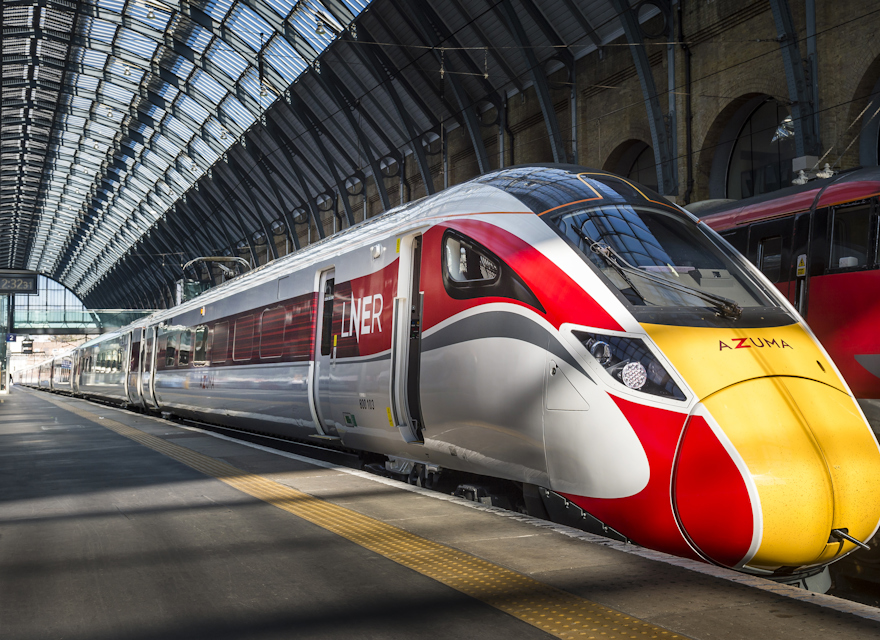julho 21, 2021
London North Eastern Railway (LNER) recently appointed Valtech as their strategic partner to develop their 5 year Blueprints for Station of the future, preparing to deliver a more digital and future ready service for their customers. Our user researchers set about planning to research with people across the UK who use LNER’s train services. This involved 5 sprints of research to build on top of the work the company had already done.
How we went about the research
The first major challenge was that as we started our first sprint, the UK entered lockdown. We were recalled back from Newcastle where we’d planned a series of sessions with staff and popup research, instead we had to quickly adapt to the new world we found ourselves in.
The first change we made was that we recruited staff from across the company to work with us using digital tools including Teams sessions and Miro to collaborate and visualise ideas.
Lockdown created opportunities to reach out to people at all levels – as they adjusted to working at home – people were happy to participate and expressed their enthusiasm about being consulted and being listened to.
We tapped into the design expertise in Valtech to help develop the new ideas. We played back the learnings from the research in each design session and selected target groups to consider, such as family groups, older travellers, first time train users, people who normally fly or take their car. We thought about what would make a real difference for these groups, how we could make their lives easier, and the path towards the new more digital version of travel and the station of the future.
We tapped into the survey results compiled by third party agencies and included our questions in new surveys – this gave a good opportunity to bring in quantitative data to supplement our research findings
What we learned
We found out a great deal about leisure and business travellers. The first group was already a very familiar one for the company – most of their travellers on the line are leisure based. The second group has not used the line so extensively, partly because of competition with flying and using their own cars.

How we conducted the research
We showed users a series of design sketches and asked them to consider how the new technology could help them travel. Many of the ideas were seen as too far fetched, but as expected some ideas emerged as winners because they made travel easier and more accessible.

We made notes in the collaboration workspace using different colours to track a single person’s comments but otherwise removing any personally identifiable information and still retain the findings.
Each session revealed findings, insights and pain points that the team could use to refine and tweak the ideas. The insights from the user research were used by the design team in their concepts, so they knew about the real-world problems customers wanted them to solve.
What we learned about user’s travel preferences
In the research we heard that people would like to learn more about how to manage their carbon footprint:
“with bluer skies and time to think, children are very ECO aware and I want to make my child happy and at ease with the future, so anything that pushes us towards that has to be good”
“It would interesting and helpful to give people carbon footprint data of their journey and the route with less emissions would be a good alternative”
We learned about their views on future options about journey planning
“If LNER can help us plan the complete journey from door to door and accommodation too if possible, I believe it would really give them the edge over other rail companies”
“I don’t want to book all parts of the trip separately, it’s great if it can be done in one go”
We also learned of their preferences at the station:
“Contactless ticket barriers would be a great improvement - just walk up and they open instead of fumbling for a bar code”
“I don’t have much spare time before a train .. it’d be brilliant if there was a way to order and pay ahead then just pick up straight away to take with me”
Conclusion
One remarkable part of the project was seeing how well people in the company understand their customers. We spoke daily with people who work on board trains and we found they adapted swiftly to a new online way of collaborating and stepped in with enthusiasm to provide their own insights and evaluate other’s ideas.
Being able to map out 5 years Blueprints takes a lot of hard work and we were amazed by how engaged
The customers we engaged with for user research were also passionate about the future of train travel. Many saw it as part of a new world order to fight climate change, along with eBikes and electric vehicles. LNER is now setup to engage with a programme of work across it’s digital estate and we know from the research that this will bring about real impact.
“We created the digital team to be much more focused we’re the first train operator in the UK to have a digital directorate. Thinking in products ensures we design the right features for the right people and tackle real problems people have. Innovation is not about implementing shiny new technology; it’s about solving real problems for the user (in our case, our Customers and People) and be mindful about our impact” - Adrian Varma, Head of Digital Experience & Innovation at LNER










